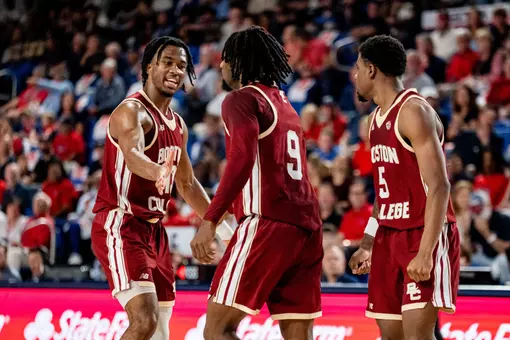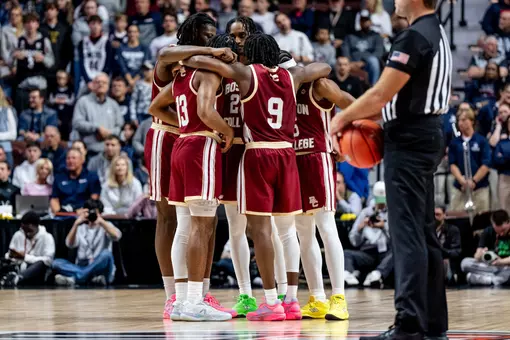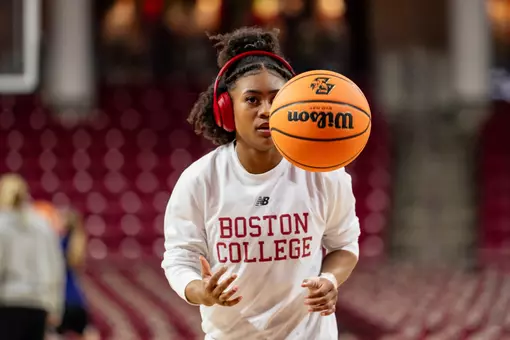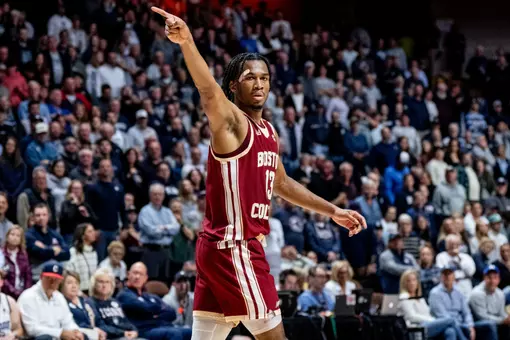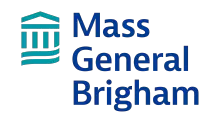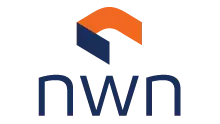
Red Sox Presence A Reminder Of BC Baseball's Journey
July 08, 2020 | Baseball, #ForBoston Files
The Sox at Brighton is surreal because it was impossible in a past life.
The last week felt like a rebirth in the baseball community. Major League Baseball franchises returned to play, and the negotiating chasm between the owners and players subsided into the echoing crack of batting practice sessions. MLB's "Summer Camp" kicked off and realized the first glimpse of the upcoming 60-game regular season.
At Fenway Park, the cacophony underwent a complete transformation into a full-fledged training facility. Remodeled concourses converted fan areas into weight rooms, and luxury suites morphed into makeshift locker rooms. Down the road at Boston College, Red Sox players ran through drills at the Harrington Athletics Village, a secondary site to assist in the absence of the organization's expansion spring training complex at JetBlue Park at Fenway South.
"I couldn't imagine summertime without baseball and specifically without baseball at Fenway Park," Red Sox CEO Sam Kennedy said on a conference call last month. "Hopefully it can provide some small sense of distraction and joy and fun and relief for people who have been locked in their homes and dealing with this really difficult situation."
The Red Sox presence on campus at Boston College is the latest example of the two entities' unique relationship. The Eagles were once a regular spring training opponent for their hometown professional club during March trips to Florida. Fenway Park, meanwhile, routinely hosted the Beanpot championship games on a semi-regular basis, with BC further moving annual ALS Awareness Games to the fabled grounds.
This past week, though, was the first time the Red Sox needed facilities in reverse. More than that, it was a statement to the facilities at Boston College, which formerly played at Shea Field, now the site of the Fish Field House behind Alumni Stadium.
Shea Field was notorious among the college baseball community. It served as a tailgate lot during football season, so the fencing around the outfield was temporarily removed. The fence itself boxed the field into the cold, wet stadium's borders. The third base line held one group of stands against the wooded area while the first base line ran right into the concrete pillars of Alumni Stadium's parking ramp.
That parking ramp eventually represented everything that was both good and bad about games at Shea Field. The circus atmosphere lining the railing was a brutal home field advantage for incoming opponents, and the Eagles embraced the wild crowds as a valued member of their own team. But the ramp stood on top of the team's only hitting tunnel, subject to the elements, which further created scheduling issues if the winter ran especially long or harsh.
It toughened BC despite its uphill struggle and wove a tough, hardened fabric into the program's soul that eventually produced player development results. San Francisco drafted Chris Shaw in the 2015 first round and kicked off a trend of matriculating Eagles into the professional ranks. Five straight drafts produced at least one draft pick until this past year, which was a five-round affair with limited picks. Regardless, BC still sent a player to the professional ranks when the New York Mets signed Joe Suozzi.
Since 2015, no ACC program produced more big leaguers than BC. Approximately 18 percent of the team's professional alumni reached Major League Baseball, a full three percent better than Louisville, which rated second. 35 percent of BC players reached AA ball, making it more likely for a Birdball alumnus to advance through a minor league system than any other ACC team.
That runs in direct competition with logical baseball thinking. Higher draft picks automatically obtain better signing bonuses and contracts, and the investment from MLB parent clubs creates a logical-but-forced progression through minor league systems. Virginia, for example, averaged a fourth round pick in its draft pool and sent a higher ratio of its selections into AA ball. The average length of a Virginia professional player, though, is virtually identical to BC.
"We have 10 years of analytics growth," head coach Mike Gambino said, "and that's been a big part of how we help kids grow and develop within the game. Our student managers work on analytics, too, so they're also learning it. Everyone develops, and it helps grow out players. They're completely different in their second game of their careers to their 50th game, and it helps us gather the data to find good spots to apply what we learn and know."
This year, both Justin Dunn and Mike King advanced to the MLB Summer Camp as big league roster invitees along with 12-year professional Eric Campbell. The duo of Dunn and King led BC to the NCAA Super Regionals in 2016 and were eventually traded during their professional careers. Now Dunn is a potential centerpiece in the Seattle Mariners' rotation while King, the last player promoted during the 2019 season, is a potential fifth starter for the New York Yankees.
They're the latest examples of BC's player development success, which is the program's hallmark despite the former deficiencies in facilities. The Harrington Athletics Village didn't open until 2018, but it fundamentally altered the popular and public perception of the baseball program, the latest example of which is the arrival of the Boston Red Sox.
Yet it's hardly the capstone or the end of BC's baseball evolution. Just beyond the press box behind the Red Sox practices casts the shadow of the future Pete Frates Center. The second phase of the Brighton Campus facilities, it will enable the Eagles to train at levels commensurate with MLB franchises.
"We're taking what we know about how to develop players and applying it on another level," Gambino said. "The entire experience will be geared towards player development. We'll have a complete locker room and full training facilities with a baseball-specific weight room. We'll have a group room and a players' lounge."
It's a previously unthinkable achievement that will erase all memories of when players shoveled batting tunnels at Shea Field. The Frates Center will replace everything with seven batting tunnels capable of opening up for pitcher work and extended baseball-specific training. It's specifically influenced by the team's emphasis on analytics, which were developed to infuse the team's signature toughness with a next-level intelligence.
It will all merge for a completely different viewpoint of Boston College baseball. Recruits will be able to see and hear a very different Birdball experience in a stadium good enough for the Boston Red Sox' training activities, but the facility development phase is something brand new to BC that fits perfectly into the team's already-successful, developed practices.
Ten years ago, Mike Gambino returned to his alma mater with the intention of building more than a team. He wanted to build a program, something that could produce year-over-year success on and off the field. He did that by developing big league-ready talent and professional prospects. Now, the team is ready to break on through to the other side of that glass ceiling and assume a different mantle, one occupied by the perceived elite of national college baseball.
At Fenway Park, the cacophony underwent a complete transformation into a full-fledged training facility. Remodeled concourses converted fan areas into weight rooms, and luxury suites morphed into makeshift locker rooms. Down the road at Boston College, Red Sox players ran through drills at the Harrington Athletics Village, a secondary site to assist in the absence of the organization's expansion spring training complex at JetBlue Park at Fenway South.
"I couldn't imagine summertime without baseball and specifically without baseball at Fenway Park," Red Sox CEO Sam Kennedy said on a conference call last month. "Hopefully it can provide some small sense of distraction and joy and fun and relief for people who have been locked in their homes and dealing with this really difficult situation."
The Red Sox presence on campus at Boston College is the latest example of the two entities' unique relationship. The Eagles were once a regular spring training opponent for their hometown professional club during March trips to Florida. Fenway Park, meanwhile, routinely hosted the Beanpot championship games on a semi-regular basis, with BC further moving annual ALS Awareness Games to the fabled grounds.
This past week, though, was the first time the Red Sox needed facilities in reverse. More than that, it was a statement to the facilities at Boston College, which formerly played at Shea Field, now the site of the Fish Field House behind Alumni Stadium.
Shea Field was notorious among the college baseball community. It served as a tailgate lot during football season, so the fencing around the outfield was temporarily removed. The fence itself boxed the field into the cold, wet stadium's borders. The third base line held one group of stands against the wooded area while the first base line ran right into the concrete pillars of Alumni Stadium's parking ramp.
That parking ramp eventually represented everything that was both good and bad about games at Shea Field. The circus atmosphere lining the railing was a brutal home field advantage for incoming opponents, and the Eagles embraced the wild crowds as a valued member of their own team. But the ramp stood on top of the team's only hitting tunnel, subject to the elements, which further created scheduling issues if the winter ran especially long or harsh.
It toughened BC despite its uphill struggle and wove a tough, hardened fabric into the program's soul that eventually produced player development results. San Francisco drafted Chris Shaw in the 2015 first round and kicked off a trend of matriculating Eagles into the professional ranks. Five straight drafts produced at least one draft pick until this past year, which was a five-round affair with limited picks. Regardless, BC still sent a player to the professional ranks when the New York Mets signed Joe Suozzi.
Since 2015, no ACC program produced more big leaguers than BC. Approximately 18 percent of the team's professional alumni reached Major League Baseball, a full three percent better than Louisville, which rated second. 35 percent of BC players reached AA ball, making it more likely for a Birdball alumnus to advance through a minor league system than any other ACC team.
That runs in direct competition with logical baseball thinking. Higher draft picks automatically obtain better signing bonuses and contracts, and the investment from MLB parent clubs creates a logical-but-forced progression through minor league systems. Virginia, for example, averaged a fourth round pick in its draft pool and sent a higher ratio of its selections into AA ball. The average length of a Virginia professional player, though, is virtually identical to BC.
"We have 10 years of analytics growth," head coach Mike Gambino said, "and that's been a big part of how we help kids grow and develop within the game. Our student managers work on analytics, too, so they're also learning it. Everyone develops, and it helps grow out players. They're completely different in their second game of their careers to their 50th game, and it helps us gather the data to find good spots to apply what we learn and know."
This year, both Justin Dunn and Mike King advanced to the MLB Summer Camp as big league roster invitees along with 12-year professional Eric Campbell. The duo of Dunn and King led BC to the NCAA Super Regionals in 2016 and were eventually traded during their professional careers. Now Dunn is a potential centerpiece in the Seattle Mariners' rotation while King, the last player promoted during the 2019 season, is a potential fifth starter for the New York Yankees.
They're the latest examples of BC's player development success, which is the program's hallmark despite the former deficiencies in facilities. The Harrington Athletics Village didn't open until 2018, but it fundamentally altered the popular and public perception of the baseball program, the latest example of which is the arrival of the Boston Red Sox.
Yet it's hardly the capstone or the end of BC's baseball evolution. Just beyond the press box behind the Red Sox practices casts the shadow of the future Pete Frates Center. The second phase of the Brighton Campus facilities, it will enable the Eagles to train at levels commensurate with MLB franchises.
"We're taking what we know about how to develop players and applying it on another level," Gambino said. "The entire experience will be geared towards player development. We'll have a complete locker room and full training facilities with a baseball-specific weight room. We'll have a group room and a players' lounge."
It's a previously unthinkable achievement that will erase all memories of when players shoveled batting tunnels at Shea Field. The Frates Center will replace everything with seven batting tunnels capable of opening up for pitcher work and extended baseball-specific training. It's specifically influenced by the team's emphasis on analytics, which were developed to infuse the team's signature toughness with a next-level intelligence.
It will all merge for a completely different viewpoint of Boston College baseball. Recruits will be able to see and hear a very different Birdball experience in a stadium good enough for the Boston Red Sox' training activities, but the facility development phase is something brand new to BC that fits perfectly into the team's already-successful, developed practices.
Ten years ago, Mike Gambino returned to his alma mater with the intention of building more than a team. He wanted to build a program, something that could produce year-over-year success on and off the field. He did that by developing big league-ready talent and professional prospects. Now, the team is ready to break on through to the other side of that glass ceiling and assume a different mantle, one occupied by the perceived elite of national college baseball.
Players Mentioned
Welles Crowther- The Man in the Red Bandanna
Friday, November 07
Men's Basketball: Citadel Postgame Press Conference (Nov. 6, 2025)
Friday, November 07
Women's Basketball: New Hampshire Postgame Press Conference (Nov. 6, 2025)
Thursday, November 06
Football: Head Coach Bill O'Brien Media Availability (November 6, 2025)
Thursday, November 06

